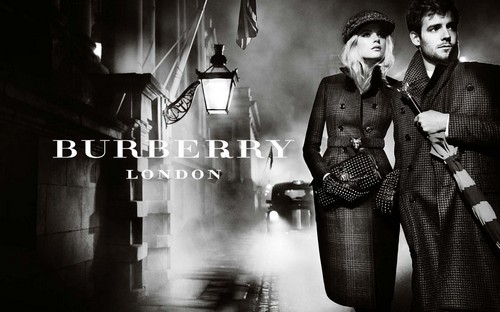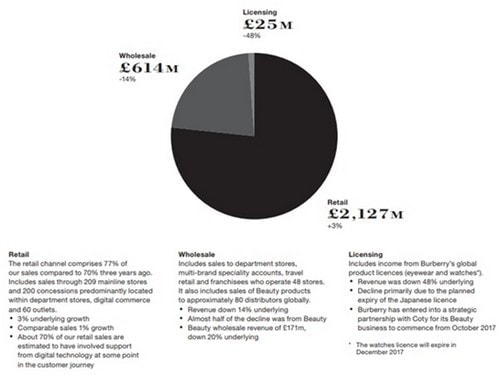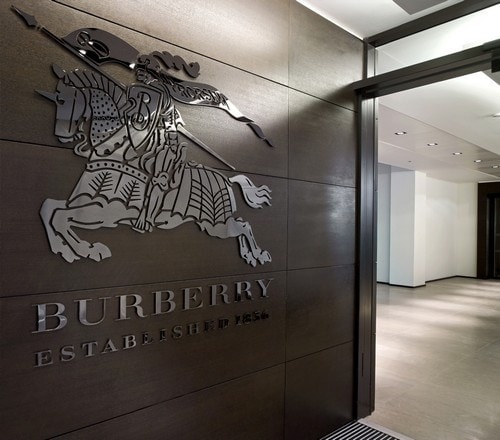The global British Luxury brand Burberry, established in the year 1856 has developed a distinctive craftsmanship, design with innovation in place. Headquartered in London the brand develops, designs, manufacture and sells a range of ready to wear clothes, sunglasses, fragrances, and cosmetics.
In the year 2006, in order to be ahead in the market, Burberry reinvented itself to position itself as a Digital enterprise offering Luxury products. The company used Artificial Intelligence and data analytics tools along with Reward & loyalty programs which give them consumer insights resulting in the improvement in customer engagements with the Brand.
Table of Contents
Segmentation, targeting, positioning in the Marketing strategy of Burberry –
Burberry, the iconic brand segments the population on variables such as offerings for women, Men, Children (0-36 month’s baby and Boy/ Girl in the age group 4-14 years) as well as fitness freaks, and operating in geographic segments Asia-Pacific, America, Europe & Middle East.
Burberry uses differentiated targeting strategy and targets customer groups such as upper social class customers in the age group of 20-45 years and varied needs such as clothing & related accessories, hygiene factors, cosmetics
It has positioned itself as a brand carrying the rich heritage of British culture and creativity.
Marketing mix – Here is the Marketing mix of Burberry.
SWOT analysis – Here is the SWOT analysis of Burberry.
Mission- “Not Available”
Vision- “To bring pioneering British creativity and culture to the world by creating beautifully made products, inspiring with storytelling and shared experiences, delivering impeccable and distinctive services, and continually innovating.”
Tagline-“Iconic British Luxury Brand est. 1856”
Competitive advantage in the Marketing strategy of Burberry–
1. Social Presence:
Burberry has 48 million subscribers online and is present in more than 20 Social networking sites such as Facebook (17 million subscribers), Twitter, Instagram, WeChat, Line etc. The personalized content published on these platforms is helping the brand in being in touch with the customers thereby understanding the changing needs and act accordingly.
2. Downsizing Assortments & improved Customer service:
Simplifying the product line, the company reduced product option count to approx 15-20% while at the same time balancing their focus on the Strong product line and innovation /newness in design.
With its increased attention on Retail businesses, a company has launched customer feedback program (promoter score methodology) which measures the quality of customer experience through the feedback system.
BCG Matrix in the Marketing strategy of Burberry-
More than 50% of the revenue of the brand comes from Clothing business with growth rate 5 % in the recent year (2017) vis-a-vis therefore it is Stars in the BCG matrix.
Accessories support the mainline clothing business and offer customers products complementing their style. This segment generates 38% revenue for the brand and since the offerings follow the global fashion trends, therefore, it is Star.
Due to the presence of the companies who are the specialized and extensive range in beauty and cosmetic products, the Burberry is struggling with this segment which is the Question mark in BCG.
Distribution strategy in the Marketing strategy of Burberry–
The retail segment generated around 77% of revenue while wholesale accounted for 22%.The brand also does license agreements which generate 1% of the revenue.
The brands’ operations are divided into three regions in which Asia Pacific represents 39% of retail/wholesale revenue, Americas 25% and Europe, Middle East, India, and Africa (EMEIA) 36% of the revenue.
Digital commerce medium is picking up and fastest growing channel in the distribution model accounting 7% of the luxury sales. To leverage this medium Burberry has been developing third-party relationships in recent years like those with Amazon, E-bay, Alibaba etc.
Brand equity in the strategy of Burberry–
Apparel & accessories British brand has been ranked 147 in the Forbes Magazine list of Top Multinational Performers and its Market capitalization is $9.6 billion as of May 2017 while revenue of the brand in last business year is $ 2.8 billion.
Most of the Luxury brands associate with customers through shows and events, Burberry too had sponsored/ organized events such as The February 2018 show, The September 2017, Womenswear February 2016 show, helping the brand in increasing Share of mind.
Competitive analysis in the Marketing strategy of Burberry-
The global Luxury brand has been carrying the rich heritage to different nations through its supplier network which has helped it in popularising the authentic and distinctive designs.
Burberry competes in the market by penetrating to developing nations (like in India the brand is present through third-party e-commerce sites), innovatively delivering through Omni-channels, reducing product assortments and simplifying the offerings etc.
It competes in the Luxury segment with the brands such as Zara, Only, Dior, Madame Tussauds, Armani etc.
Market analysis in the Marketing strategy of Burberry-
Burberry is working SAP Ariba Technology for simplified and digitally enabled universal supply chain globally. The market of the luxury brands like Burberry continues to be challenging with stagnation (slow growth) in the developed economies, high debts in the emerging markets, easy acceptance of the digital mediums for purchases, decline in the growth rate of the sales through Retail as the well wholesale segment.
However, with the advancement of technology, digital platforms, and high acceptance of luxury goods through e-commerce sites the strategy of the brand in going digital is in line with the other players in the market.
Customer analysis in the Marketing strategy of Burberry–
The customer of Burberry is super rich HNIs (High Net worth Individuals) who are at the stage of Esteem as per Maslow’s hierarchy of needs.
These customer groups are demanding, have the detail view of everything in and around to them, are passionate and quench of looking good and outshining the crowd.
In wholesale segment customers of the brand are franchisees, e-commerce websites, wholesalers while in retail segment brand caters to Women & Men in the age group of 20-55 years and children in the age of 0-36 months & 04-14 years.
Liked this post? Check out the complete series on Strategies


